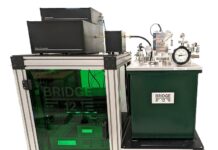The Relationship Between Temperature and High-Precision Resistor Performance
The impact of temperature upon resistor performance is reflected, both internally, in terms of its effects on component operation; and externally, in terms of resistor behavior within the installation environment. Inherent to resistor design is the concept that, as electrical current flows through a resistor, it generates a certain amount of heat. This is a phenomenon known as the Joule effect. The thermal response created by the Joule effect then induces relative mechanical changes, or stresses, within the resistor. These stresses are caused by differential thermal expansions in the resistor materials of construction, amounts of which can vary, based on the materials themselves. Ambient temperatures within the installation environment can similarly influence resistor response, in terms of generating heat which can potentially affect resistor performance.
An optimal design is therefore one which minimizes high-precision resistor susceptibility to external and internal stresses during different usages and power loads, without sacrificing performance and reliability. In Bulk Metal Foil resistive technology, this goal is achieved by the creation of a precise thermo-mechanical balance between generated heat, materials of construction, and associated manufacturing processes. Through careful design, the need to compensate for the effects of heat and stress during operation can therefore be virtually eliminated, further increasing performance stability. In recognition of the important relationship between temperature and high-precision resistor performance, the R&D team at Vishay Foil Resistors ensures that its full ultra-high precision resistor portfolio is designed in this manner.
For example, during the development of a Bulk Metal Foil element, a proprietary cold-rolled foil material is bonded onto a ceramic substance. That material is photoetched into a resistive pattern, without introducing mechanical stresses onto the material. Following this process, high-precision resistors are laser-adjusted to a specified resistance value and tolerance. Because the resistive material is neither drawn, wound, nor mechanically stressed during the manufacturing process, the high-precision Bulk Metal Foil resistor can maintain its complete intended design characteristics, and therefore full performance reliability, including TCR.
In contrast, other common resistor manufacturing methods, such as wire winding, thin-film sputtering, or thick-film glazing, have an inherently greater likelihood for the introduction of mechanical stresses, and therefore greater potential for thermo-mechanical imbalance. End users are therefore recommended to pay close attention to rated temperature specifications, to ensure that a resistor is operating according to published specifications. By adhering closely to these values, the end-user can be assured of continued resistor reliability, regardless of manufacturing process. When a resistor is operating above rated temperatures, it can fail to function, or otherwise incur damage which directly compromises accuracy. Should such resistor over-temperature conditions persist over an extended timeframe, individual resistance values may permanently change, leading to complete circuit malfunction. While manufacturers do routinely design products with a certain added margin of acceptable temperature limits beyond published specifications, such leeway can vary significantly by manufacturer.
Read “Interpreting TCR, Chord Slopes and Change Rate Analysis Specifications” in next page


















